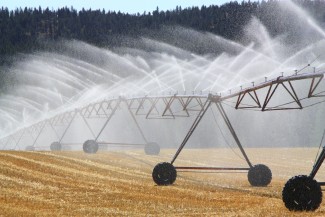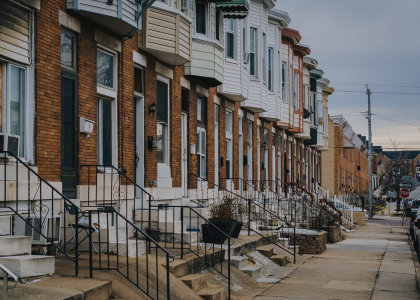(This is the fourth blog post in our series on the energy-water nexus. Our first post outlined the potential impact of climate change, our second suggested methods of reducing energy and water consumption, and our third summarized ACEEE’s past work in this area and potential future work.)
The coastal United States faces difficult challenges as it seeks to provide clean water to its growing population. Because of saltwater intrusion, it may need to construct more energy-intensive water desalination plants or implement underutilized water reuse techniques. This prospect presents a grave concern to those in the energy industry, which is why this post concludes with recommendations for coastal areas to minimize water and energy consumption as they address water shortage concerns.
Our growing population and saltwater intrusion will stress water supply and energy resources
At the current rate, the United States would require an additional 11 billion gallons of fresh water per day in 2020, compared to 2016, despite the long-term trend of less water use per capita (largely thanks to water efficiency programs). Certain coastal areas will also experience more water stress from climate change than their non-coastal counterparts. Saltwater intrusion into traditional fresh water aquifers in states like Florida means these areas may need to consider implementing more advanced treatment methods or finding new water sources. Californians suffered through six years of drought, and though the recent heavy rainfall has brought relief, there is no guarantee that the state’s water struggles are over. A 2016 NASA study found 9% of the US coastline is especially susceptible to saltwater infiltration of fresh groundwater supply, including areas in southeastern Florida, Southern California, and Long Island, New York.
Since brackish water and seawater require more intense treatment options than freshwater, membrane filtration techniques like reverse osmosis are typically needed to provide adequate filtration to meet US water quality regulations. Even though scientific advancements have improved the cost-effectiveness and efficiency of membranes, these techniques still require much more energy than traditional treatment of ground or surface water. For a sense of the magnitude of the difference, traditional water treatment techniques use approximately 2,000 kWh per million gallons of water, while seawater desalination plants (which frequently use reverse osmosis) use 15,000 kWh per million gallons of water on average.
Coastal areas are beginning to plan how to address these anticipated water needs. They often look first at expanding water efficiency programs or, in some cases, installing reusable wastewater or gray water systems in new developments. Distributed systems may provide another opportunity to maximize the efficient use of water. Distributed wastewater management is an approach to water treatment design that focuses on optimizing wastewater collection, treatment, and dispersal. Frequently, distributed systems focus on reusing wastewater and stormwater.
Though water reuse is not currently a widespread form of water treatment, areas like St. Petersburg, Florida have successfully implemented advanced treatment systems. Reclaimed water now accounts for about 40% of the city’s total water demand. While an increase in the prevalence of distributed systems and water reuse would reduce water and energy consumption, certain steps need to be taken to maximize their efficiency potential.
How energy efficiency can help meet our water treatment challenges
No single silver bullet will dramatically reduce the energy consumption of a water treatment facility. Instead, we suggest a combination of techniques. Developing a new water treatment facility presents an opportunity for collaboration between electric and water utilities, which share the overlapping goals of reducing wasted energy and water. Electric and water utilities, which may not frequently coordinate with one another, would both benefit from contributing to the design process and creating an energy-efficient culture at the plant.
Water treatment planners should investigate the potential to implement a holistic distributed system design approach and water reuse into a community water system. Where possible, facility design should include a gravity-fed system to minimize the use of energy-intensive pumping. If using reverse osmosis membrane technology to treat brackish water or seawater, facilities should consider more energy-efficient techniques.
Installing high-efficiency equipment at plants, such as pumps and motors with variable frequency drives, also has the potential to save as much as 30-50% of pump energy. Advanced monitoring and controls techniques have the potential to reduce energy consumption significantly. Installing on-site generation, such as a combined heat and power or solar photovoltaic system, would allow the plan to utilize cheaper and cleaner energy sources.
Factoring energy efficiency into the culture at the plant from the start will pay dividends later, such as developing energy benchmarks, setting energy targets, tracking performance, and rewarding progress. The standard ISO 50001 provides a framework to incorporate energy efficiency into facility operation, which includes requirements for energy audits, staff training, and energy savings measurement and verification.
Based on current trends, cities and communities throughout the United States, especially those in coastal areas, will need to consider how to address changing water needs. The construction of new water treatment plants presents an opportunity to integrate energy efficiency methods into water treatment plant design. We should also continue to increase our water efficiency in order to slow the growth of demand. As the resource management challenges in the future overlap, so should our solutions.



